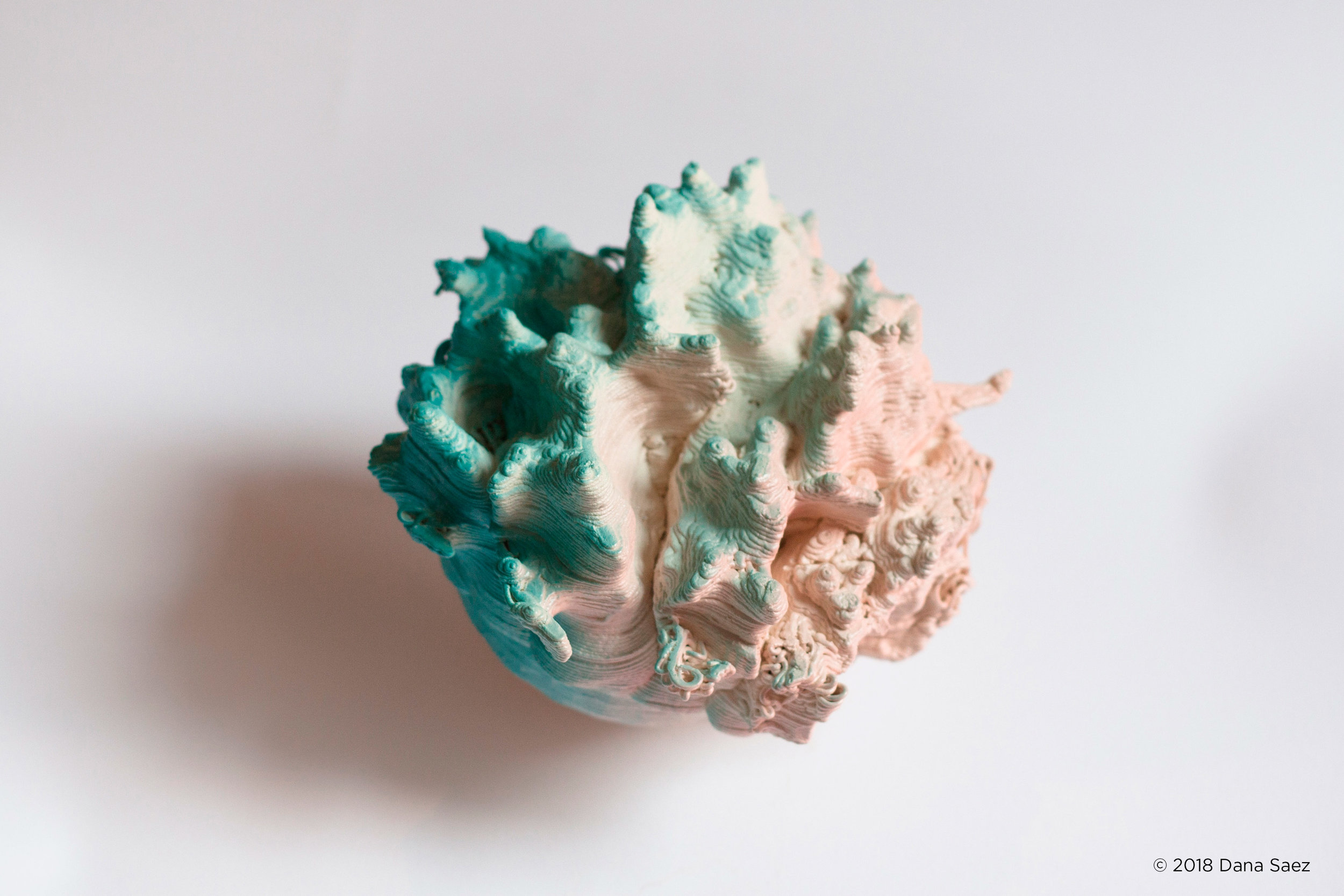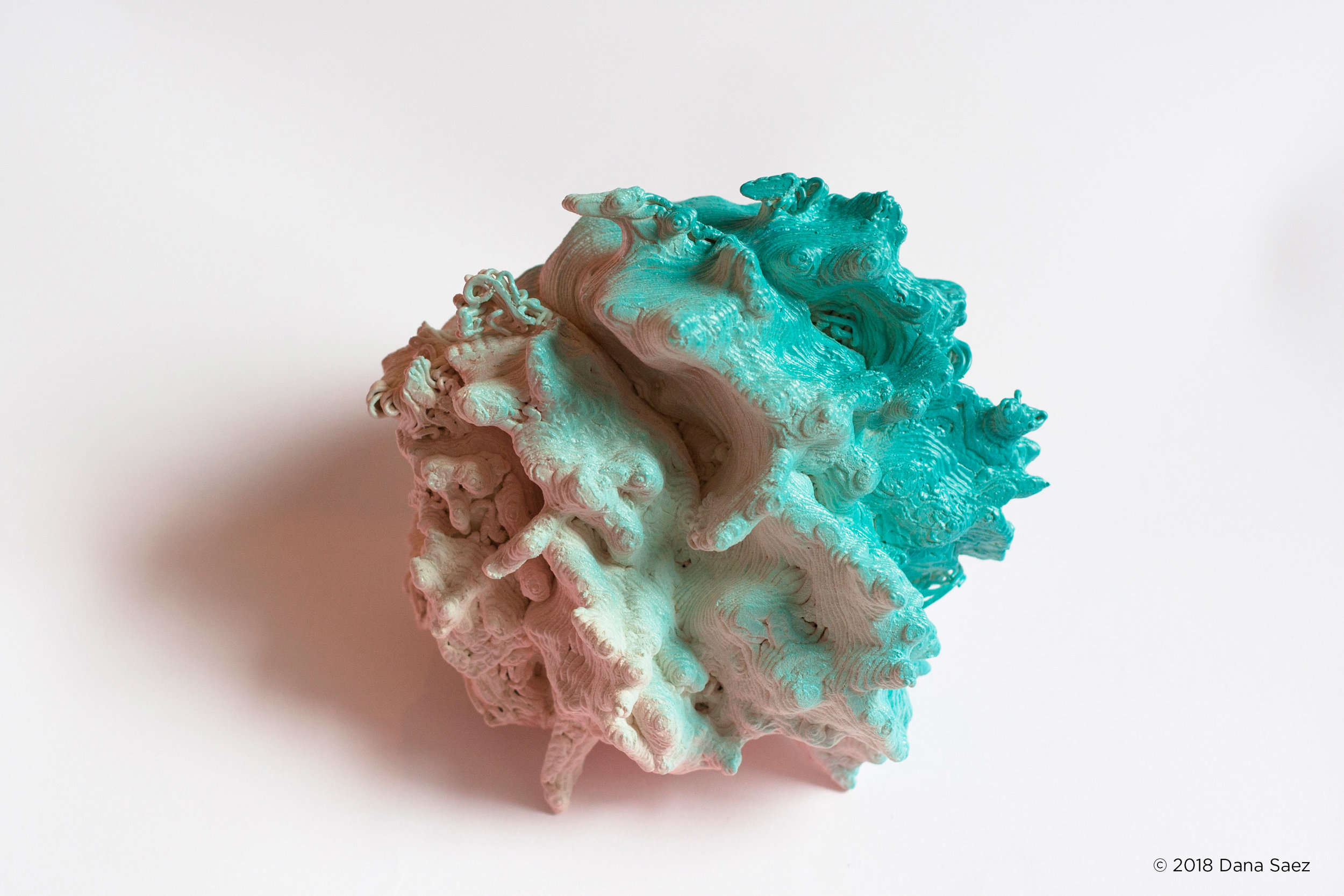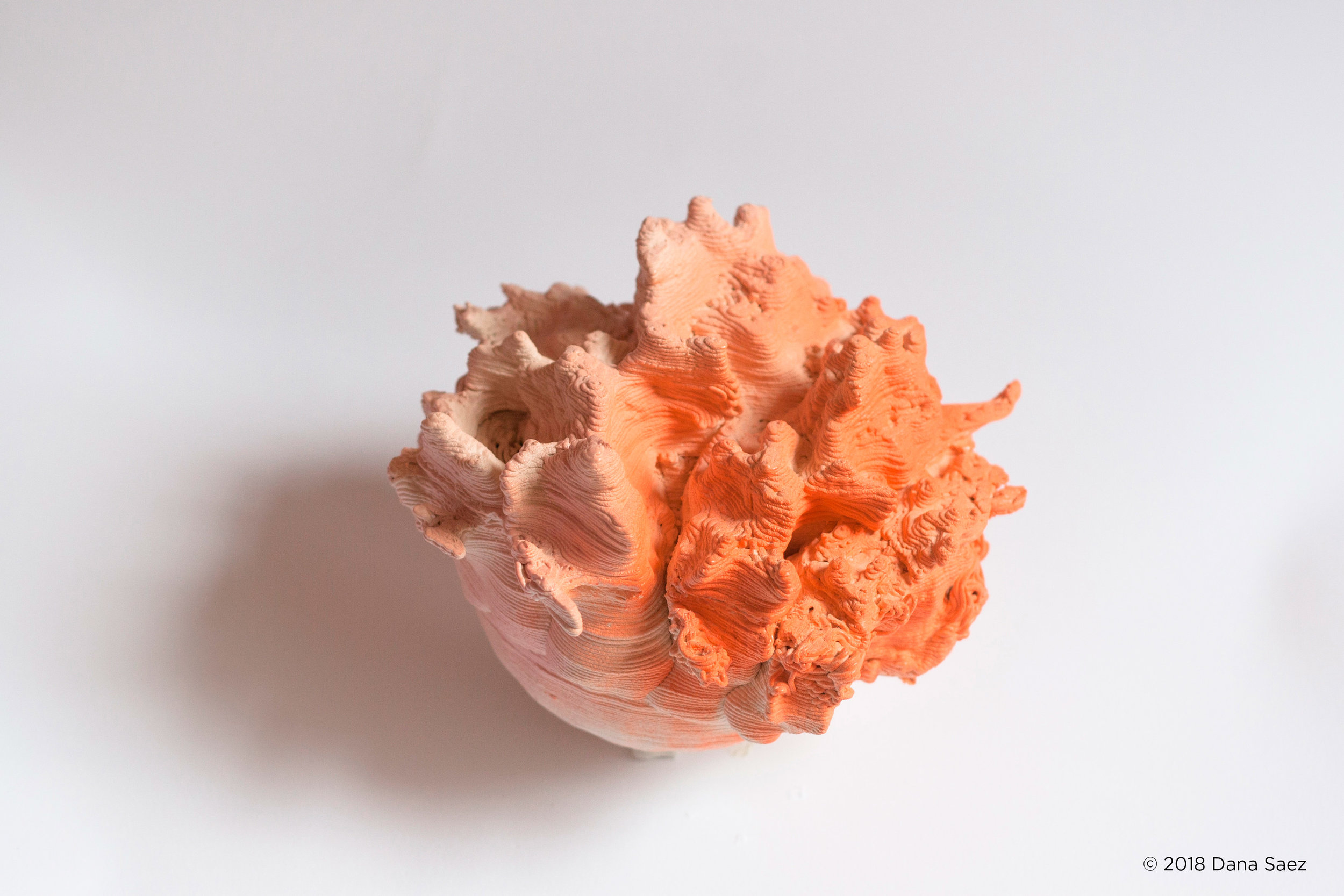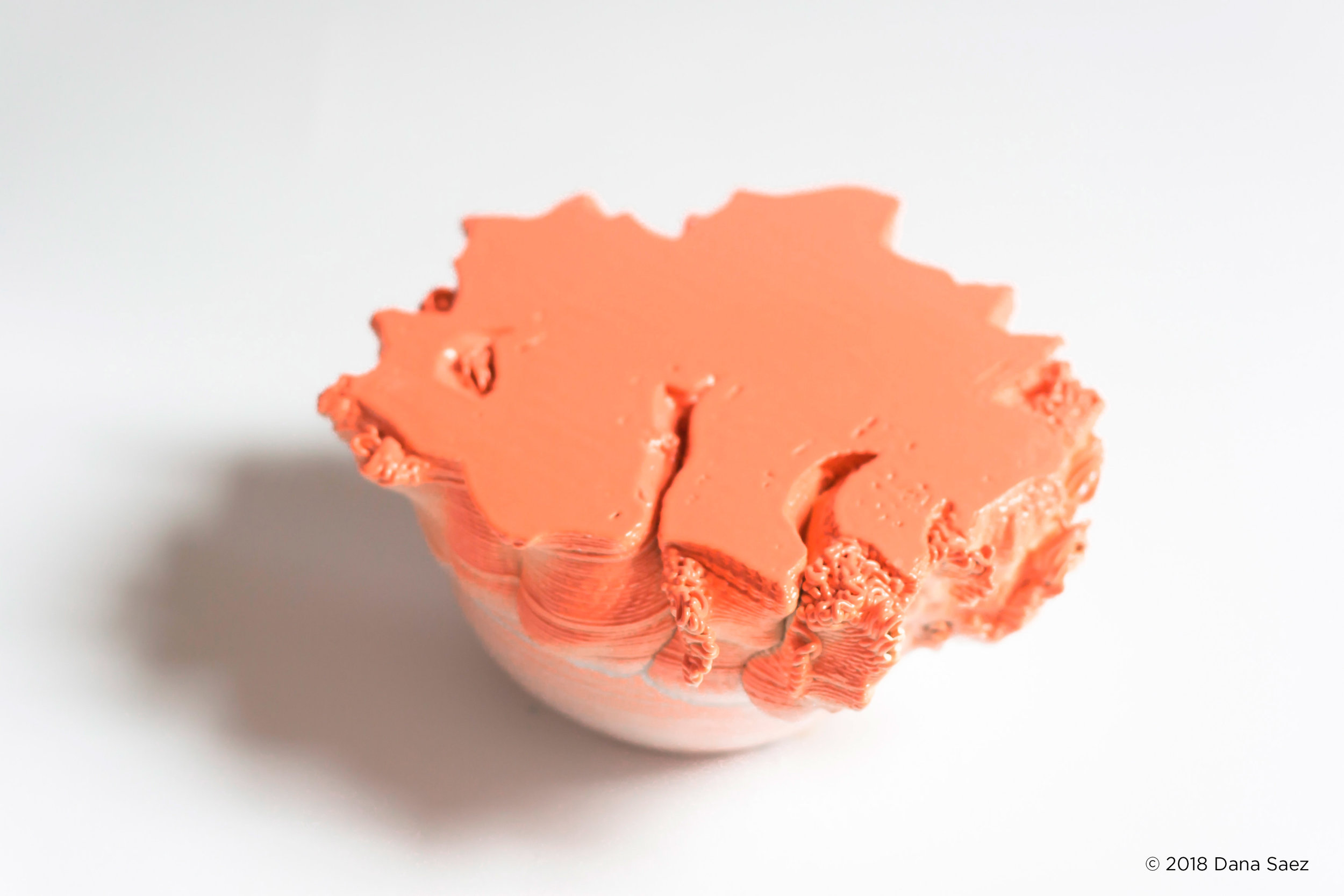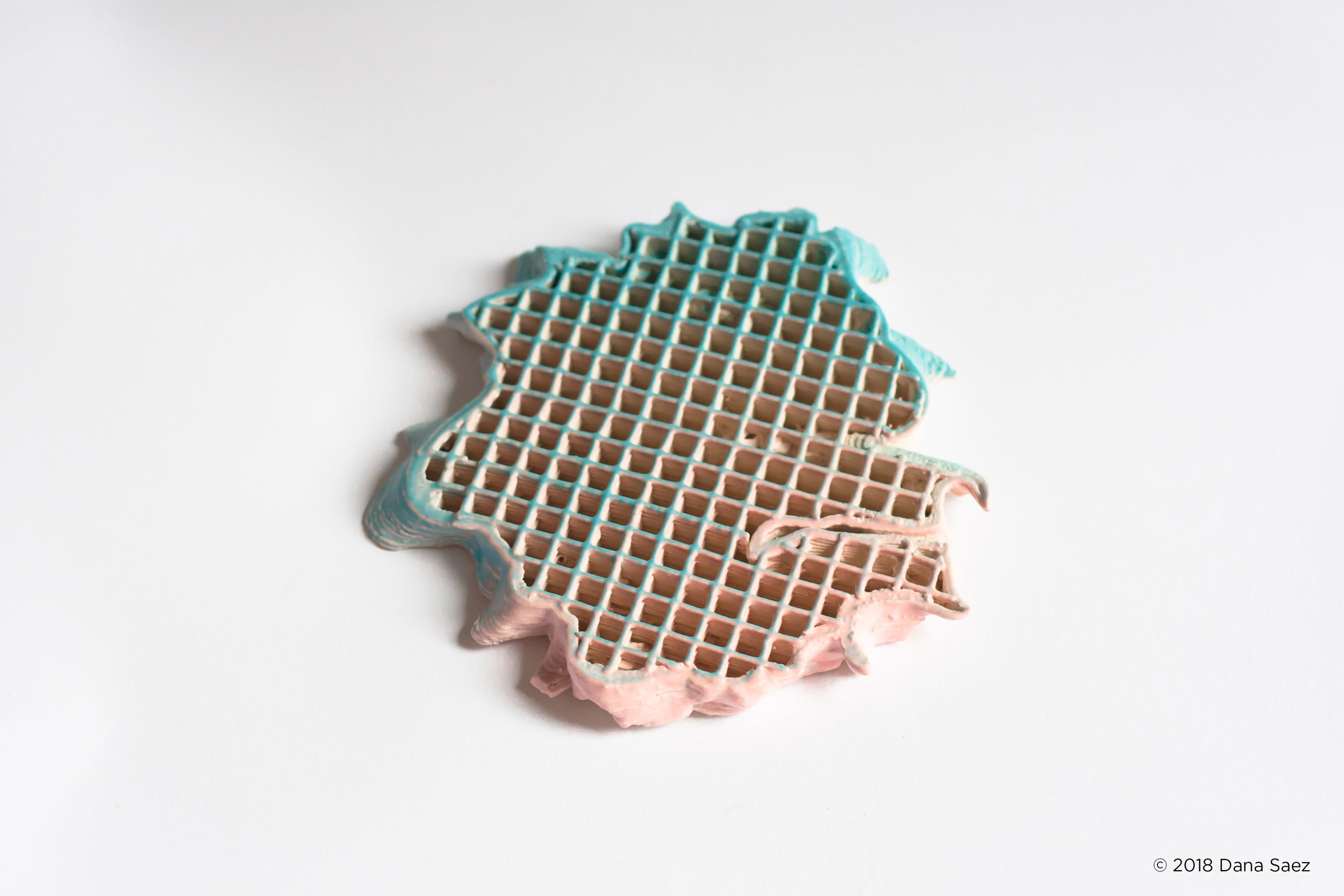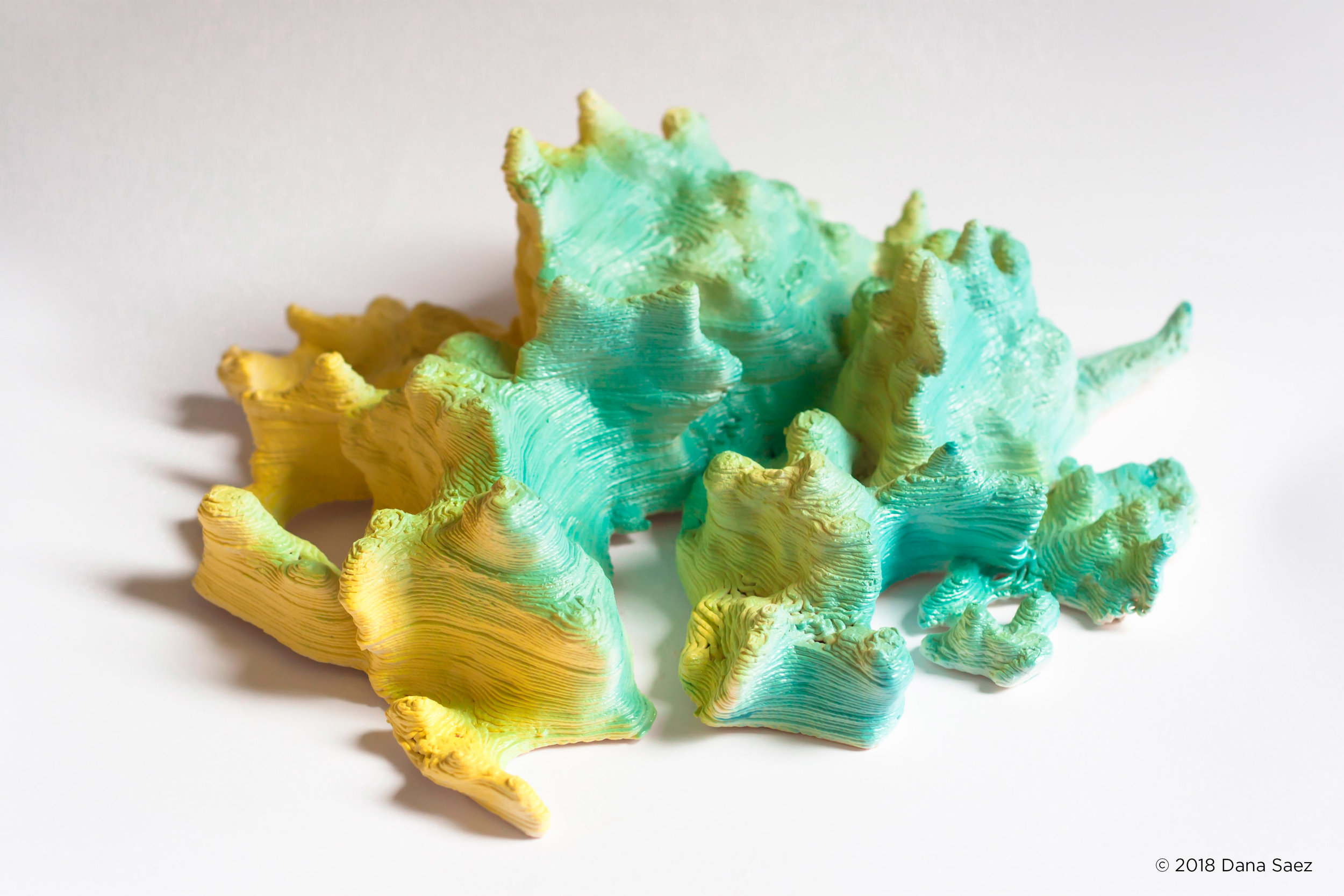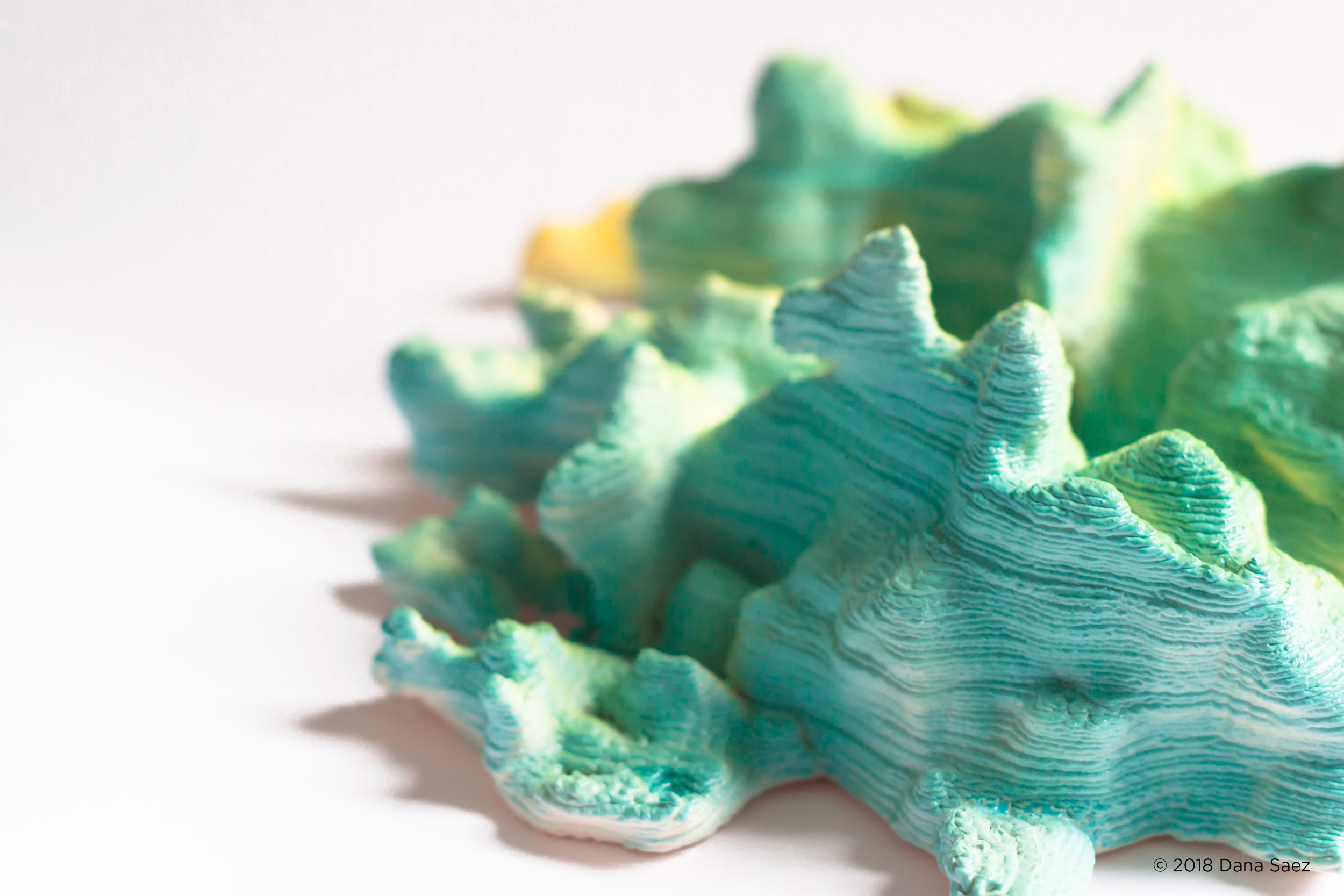CAPTURED DEVIATIONS
European Ceramic Work Centre, the Netherlands, 2018
The exploration of digital tools and the evaluation of its influence in the aesthetic realm is a constant topic of research in my practice. The speculative use of devices, software and machines in order to capture and manipulate nature bears unexplored expressive und formal potential.
This research began by exploring three dimensional scanning tools on a miniature scale, originally designed for large objects. On this scale everything matters; textures, lights, shadows, colors, everything is recorded and translated into a million-polygon model. The digital model, although complex, is not a precise replica of the original. It has lost some qualities and gained others: a new entity develops at the end of the process.
Something analog happens during the fabrication process: a digital file serves as an input and a completely new one emerges.
The layered aesthetic is carefully executed by the micro controlled machine, yet the particularities of the material and the complexity of the ‘original’ model provoke a natural-looking expression. Were the movements of the machine planned and executed perfectly, the material and the interaction with the tool creates texture, viscosity, and roughness.
Two formal systems coexist on every object: the irregular, organic outline and the machine-generated grid. The last stage of this project aimed to test the structural opportunities of the latter. The final shape of these bowls is defined by how the infill adapts and shapes itself according to a temporary support structure.


